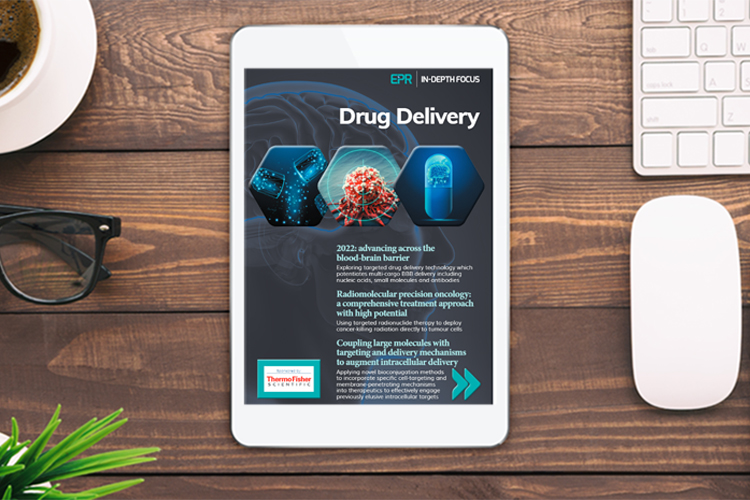Drug Delivery In-Depth Focus 2022
Posted: 16 February 2022 | European Pharmaceutical Review, Thermo Fisher Scientific | No comments yet
Articles featured in this in-depth focus discuss a technology enabling drugs to be delivered across the blood-brain barrier, the potential of targeted radionuclide therapy as a precision oncology treatment and novel bioconjugation methods to improve biologics drug delivery.


- 2022: advancing across the blood-brain barrier
The brain is protected by the blood-brain barrier, a multi-layered structure which helps to protect it from the invasion of pathogens or unwanted substances and limits drug transport into the brain via the bloodstream. Here, Dr Oliver Ernst and Dr Heiko Manninga from German biotech company NEUWAY Pharma share details of their targeted drug delivery technology, EnPC, which potentiates multi‑cargo BBB delivery including nucleic acids, small molecules and antibodies. - Radiomolecular precision oncology: a comprehensive treatment approach with high potential
A significant obstacle still faced in oncology is damage to healthy cells inflicted during treatment, which robs patients of their quality of life while battling cancer. Targeted radionuclide therapy (TRT) is a type of radiomolecular precision oncology that addresses this issue by deploying cancer-killing radiation directly to tumour cells, with little damage to healthy, surrounding tissue. Richard Baum, President of the International Centers for Precision Oncology (ICPO) Academy, explains more. - Coupling large molecules with targeting and delivery mechanisms to augment intracellular delivery
Most intracellular drug targets remain intractable due to cellular membranes effectively denying large foreign molecules entry into the cytoplasm. Over recent decades, several technologies that enable biologics to enter cells have emerged, but successes remain limited to date. Here, Sapreme Technologies’ Miriam Bujny, Chief Development Officer, and Guy Hermans, Chief Executive Officer, discuss novel bioconjugation methods to incorporate specific cell-targeting and membrane-penetrating mechanisms into therapeutics to effectively engage previously elusive intracellular targets.
Issue
Related topics
Anti-Cancer Therapeutics, Biologics, Drug Delivery Systems, Formulation, Research & Development (R&D), Technology, Therapeutics









